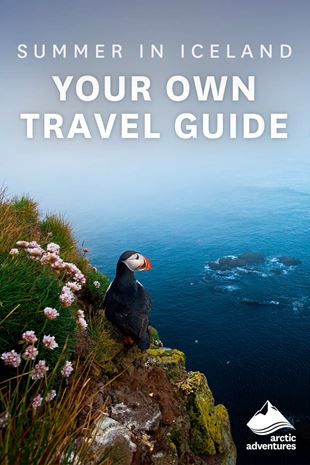
Itinerary for a Summer Weekend in Iceland
For such a small country, there is a lot to do in Iceland. It is a land bursting with natural wonder, from the peaks of its mountains to the depths of its springs.
Iceland in summer is a fairy tale wonderland. The weather is at its most pleasant, and the evenings are absurdly long. It’s the best time to explore Iceland’s rich natural beauty.
Summer is the perfect middle ground. Winter can be too cold; spring and fall too rainy. It is the ideal season for those visiting Iceland because of its beauty and relaxing activities.
Here, you will find a guide to the top summer activities in this magical country. You’ll find out the best time to visit Iceland in summer, what attractions you should visit, activities to participate in, and the best time for them.
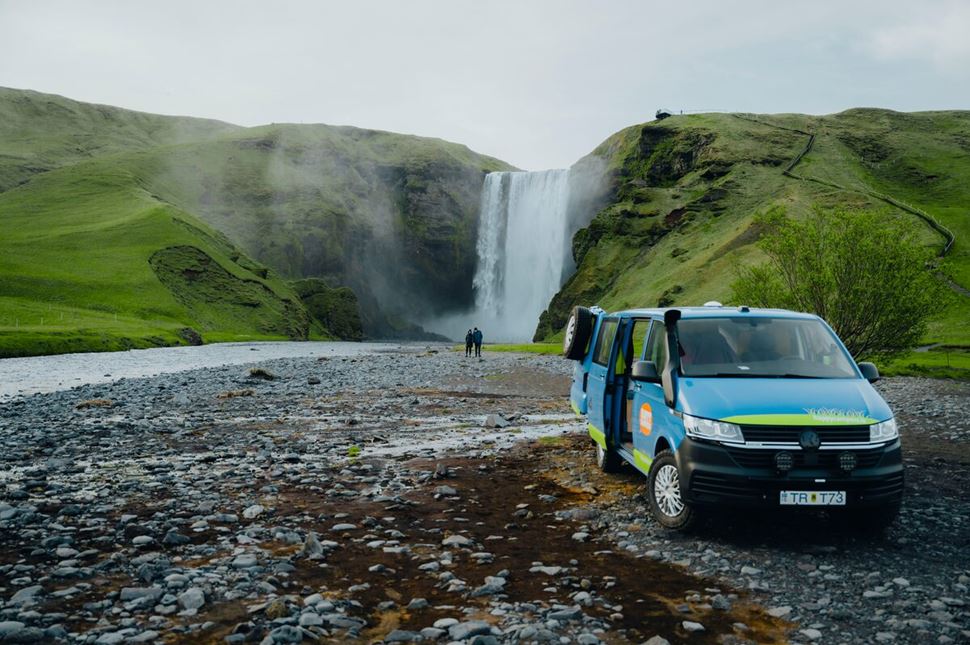
Summer on wheels at Skógafoss with Happy Campers. Photo by Gunnar Gaukur.
Contrary to what you might have heard, northern lights are not seasonal. They can appear all year round. However, it’s practically impossible to see them in Iceland in summer. Why? Because:
That’s why northern lights are not part of summer and sometimes even winter tours. It’s entirely up to chance if the northern lights will appear.
Iceland’s temperature in summer can reach as high as 20-25 (68-77 °F), but please pack a coat and shorts! Lows of Iceland’s summer temperature can reach about 6.7 °C (44.1 °F). Iceland can be showery, even in the summer, and the temperature is noticeably lower in the highlands and mountaintops.
It is the price you pay for the beautiful skies and breathtaking landscape views you’ll experience. And the air and water are the freshest you’ll ever experience.
Bird watching? Why not. Hiking? The wonderful weather opens up many outdoor activities for you to try out.
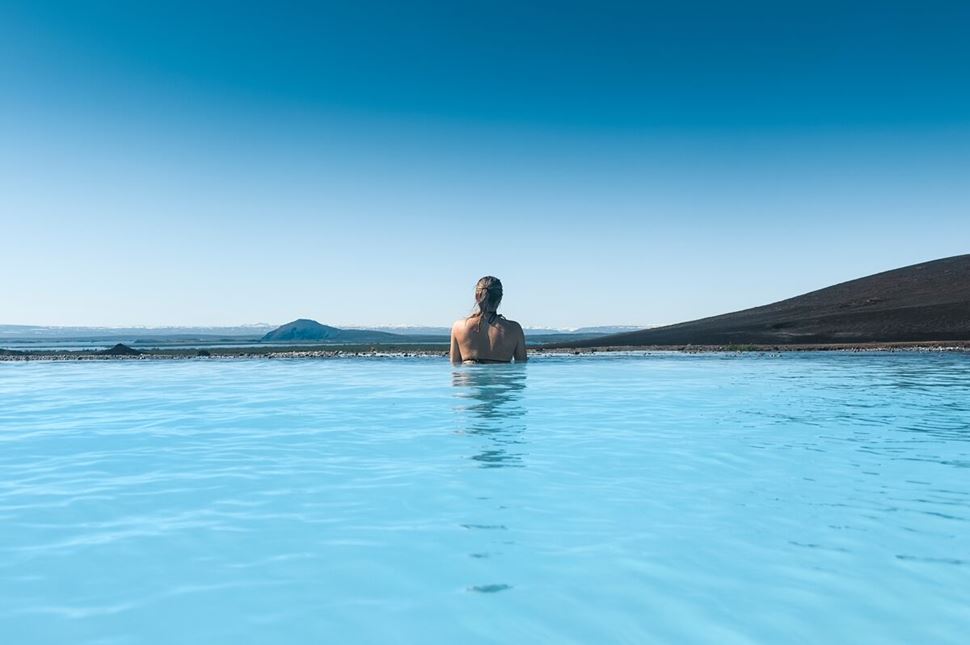
Summer’s sky-blue waters at Mývatn Nature Baths. Source: Arctic adventures.
Partake in an Icelandic tradition by taking a dip into the relaxing oasis of the hot springs. Icelanders like to take a dip year-round, but with milder weather and longer days, summer suits this activity more than any other season.
The best part? Hot springs and geothermal swimming pools dot the whole island of Iceland. You’ll find one either around the corner or on your hike.
Hot springs can range from the decidedly simple (no changing rooms, very remote) to luxurious (part of a spa, with changing rooms and sometimes even cafés).
Geothermal pools are like swimming pools you know and love, but they have naturally heated water and are often built into the landscape.
Travel through Golden Circle and get to see the most important highlights of Iceland, and later treat yourself by going to Blue Lagoon.
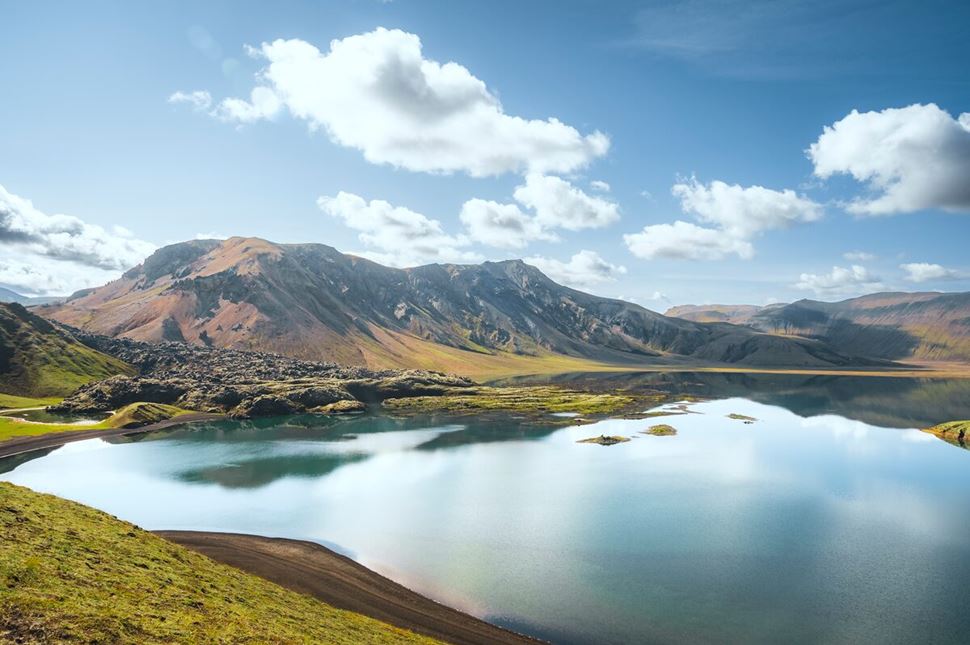
Summer paints Landmannalaugar in rainbow colors. Captured by Gunnar Gaukur.
Hiking is the best way to experience the glorious landscape, and summer is the season for that. The choices are almost infinite. You can try the towering volcanoes and epic views of the Thorsmork hike, the caramel peaks of Landmannalaugar, or Glymur, the tallest waterfall in Iceland, among many others. Just make sure to see as much as you can, as the Highlands region is less accessible in the winter months.
Of course, prepare for a challenge. Bring rain gear, proper footwear, and some spare clothes. Prepare for your hike or trek, and make sure you pack everything you need.
The summer months in Iceland are perfect for camping. While the weather can change drastically any second, Iceland is very camper-friendly. The choice of camping spots is almost limitless. You can camp out in the wild or designated campgrounds. The air is incredibly fresh, and you can enjoy awe-inspiring views in the morning.
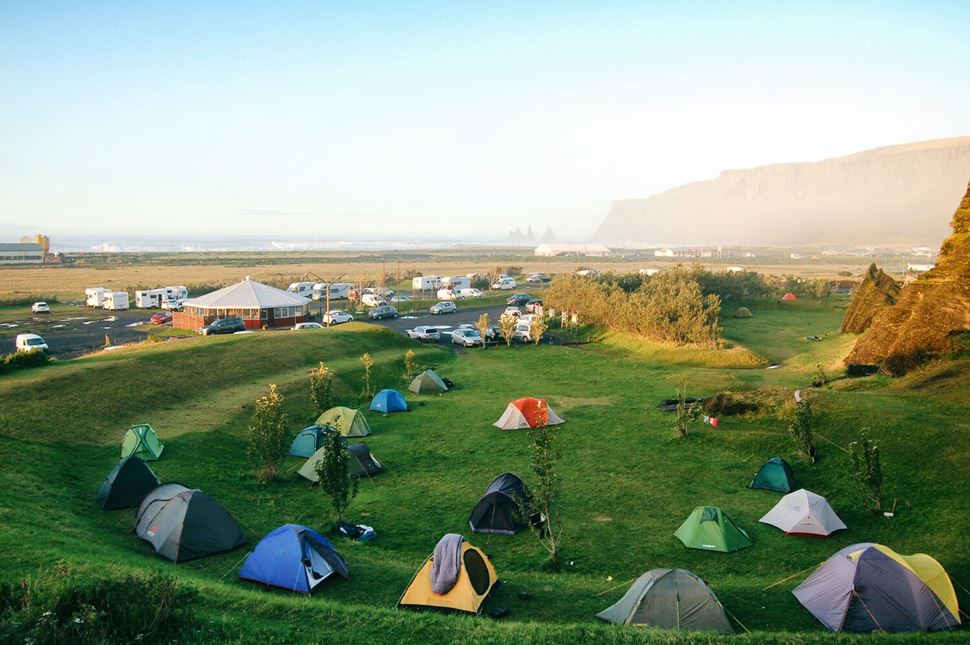
Wake up to the wonders of Iceland’s South Coast.
If you want to experience as much as you can as quickly as possible, you can do so with . You can also go solo. Check out our guide and make sure to visit these camping sites:
Iceland is loved by puffins, as there are 8 to 10 million of these birds residing here. What’s great about it is that the best time to see puffins is during summertime, from May to August. Many travelers aim to see these funny and colorful birds in their natural habitat.
However, don’t forget that they’re a part of nature, so it’s important to follow a few rules when spending time with these creatures. These rules include keeping your distance from them and not petting or feeding them. To play it safe, take a dedicated tour to see the birds without disturbing them.
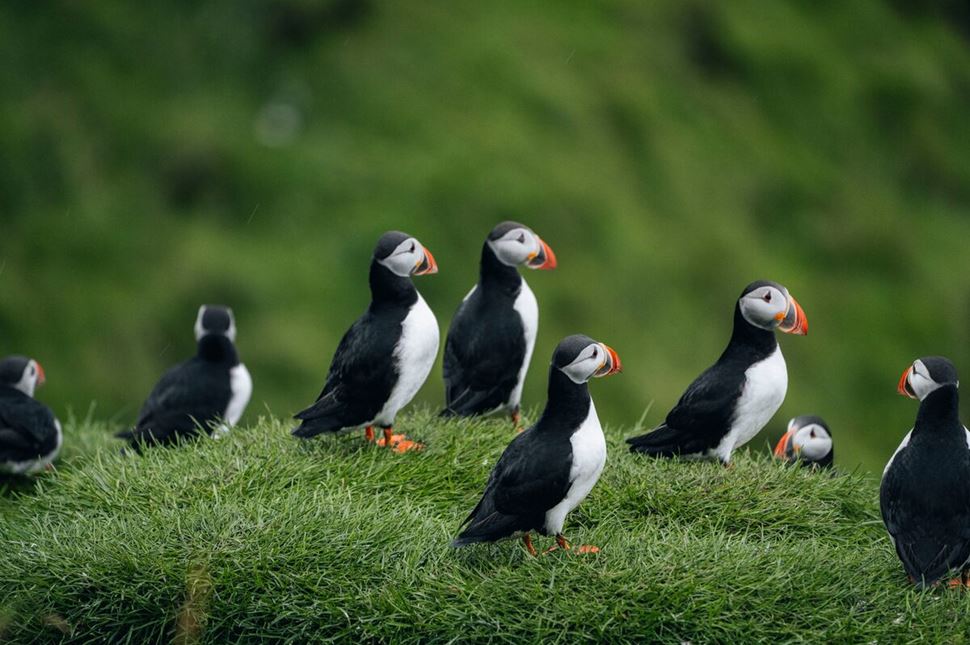
Vestmannaeyjar puffins during nesting season. Image courtesy of Arctic Adventures.
If you’re not yet sure what to do in Iceland in summer, try out a whale watching tour as it’s one of the popular activities. It’s said that the best time to watch these giant mammals is from April to October, but their “peak season” is from June to August.
Iceland in the summer is particularly pleasant because of its not-so-harsh weather and winds. These conditions are great to go on a boat and look for various species of marine life, surrounded by fresh air and spectacular views.
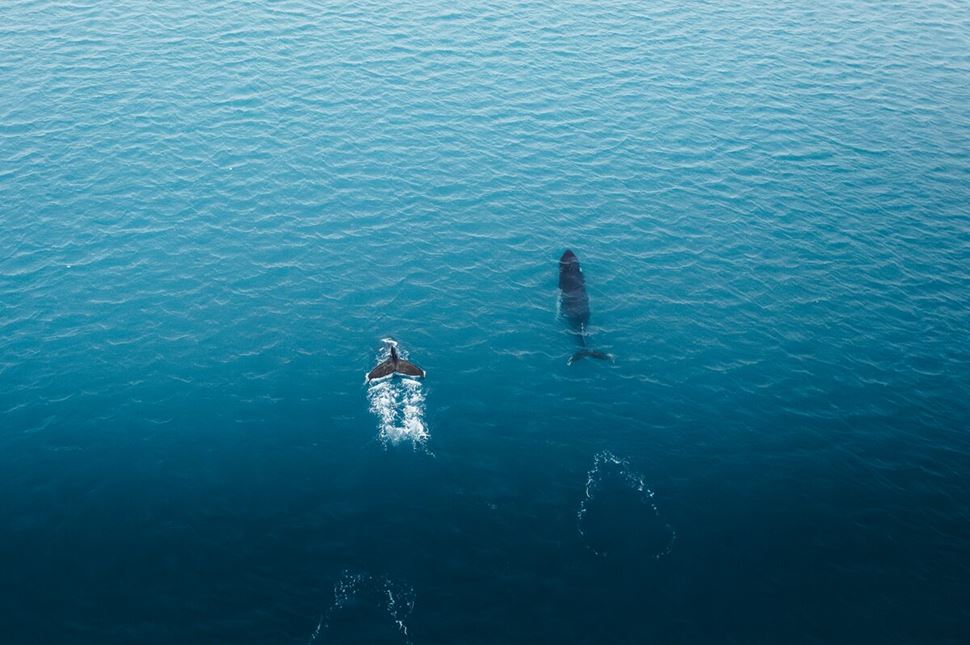
Humpback whales are often spotted in Iceland’s wildlife-rich waters. Thanks to Gunnar Gaukur for sharing this image.
Does it get dark in Iceland in the summer? It depends on the summer month. From June 15th to 30th, midnight sun sets in. It is a phenomenon that only occurs in the arctic areas of the Earth, including Iceland. It’s summer’s response to winter’s northern lights.
During the midnight sun period, a certain twilight sets in. It’s not dark; it’s not light. It’s the golden hour that lasts for two weeks. Perfect for picture-taking and tours. While tourists might have a hard time falling asleep, locals are the opposite. They have their own traditions related to this period.
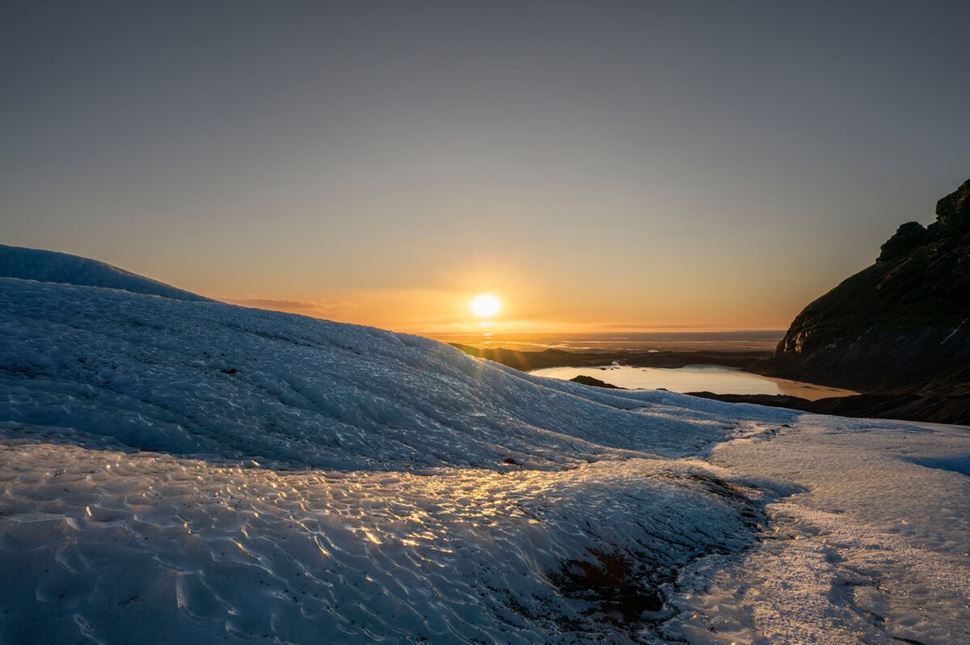
Falljökull ice field glistening under the midnight sun. Captured during one of our tours.
From vintage classics to Bjork and far beyond, music is a big part of Icelandic culture, and many of the biggest gigs and festivals take place between June and August.
Reykjavik has numerous live music venues, and then there are music festivals in the capital and throughout the country. Lunga takes place in July in the relatively remote and quiet Seyðisfjörður and is a music and arts festival of international renown.
You can also celebrate the summer solstice in the Icelandic way. Multiple events and festivals take place during the longest day of the year. Time your vacation, and you might be able to participate in them.
That’s just the beginning, and new events are always springing up, so we’d advise doing a little extra research on Icelandic festivals and gigs before you go.
Grab your waterproof boots and inflatable jacket and explore the water of Iceland with a raft. Don’t worry about the cold or iced-up paths. In summer, the only thing you’ll have to worry about is the amount of fun you’re going to have.
For the best experience, a guided raft tour is the way to go. Not only will it be safer, but you’ll also get to see more awe-inspiring sights.
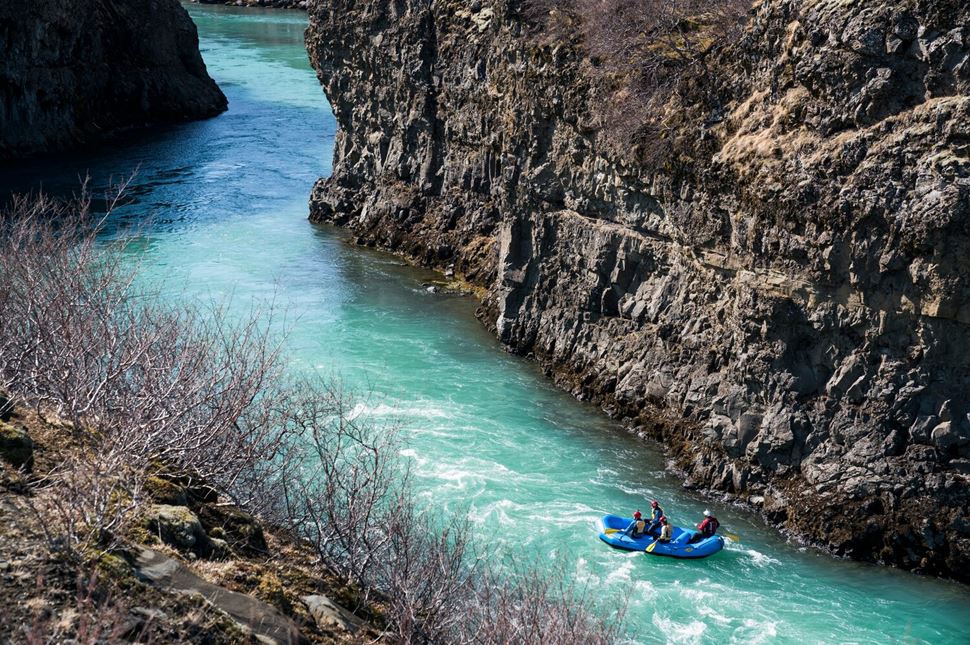
Gullfoss Canyon rafting, pure thrill under bright skies.
Enjoy the pleasant weather in Iceland during summer by going on a boat ride to Jökulsárlón glacial lagoon. One of the most remarkable ways to enjoy Icelandic nature is by going on a Zodiac boat tour. Here, you’ll be able to cruise on the glacial lake surrounded by icebergs, appreciate the scenery, and watch the wildlife.
It’s thought that due to weather changes, there will be a time when the lagoon becomes an inlet, so take the opportunity to enjoy Jökulsárlón as it is now and explore the shores of the famous Diamond Beach.
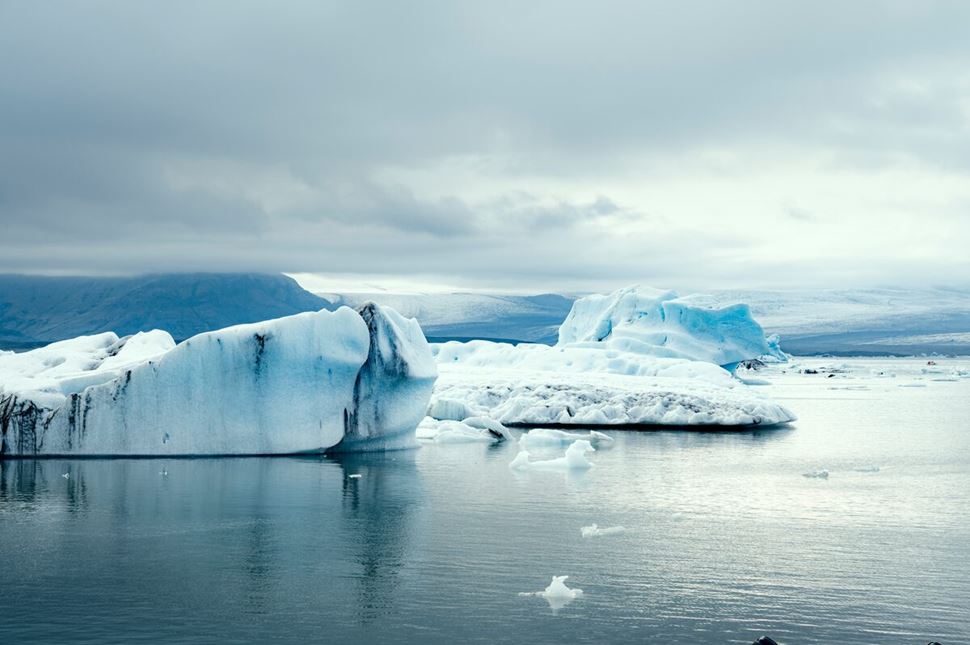
Experience icy wonders in summer at Jökulsárlón glacier lagoon. Photo by Gunnar Gaukur.
The extra daylight hours and mild temperature make all the difference. To make the best use of them, we compiled a list of the places to visit in Iceland in summer.
Iceland protects its national parks and the natural beauty that resides in them. Summer is the best season to see and explore them.
Þingvellir (or Thingvellir) might be the best known. It sits between two continental plates, which helps create its unique appearance and terrain. This is the site of the stunning Öxarárfoss Waterfall, Almannagjá ravine, numerous Game of Thrones shooting locations, and the world-famous Silfra Fissure snorkeling site.
Skaftafell, in South Iceland, is packed with adventure. Visitors take to this region for its hiking, cycling, ice caves, and incredible glaciers and icebergs.
Jökulsárgljúfur is the site of the deepest canyon in Iceland. It really comes alive in summer, when its lush foliage is in full bloom.
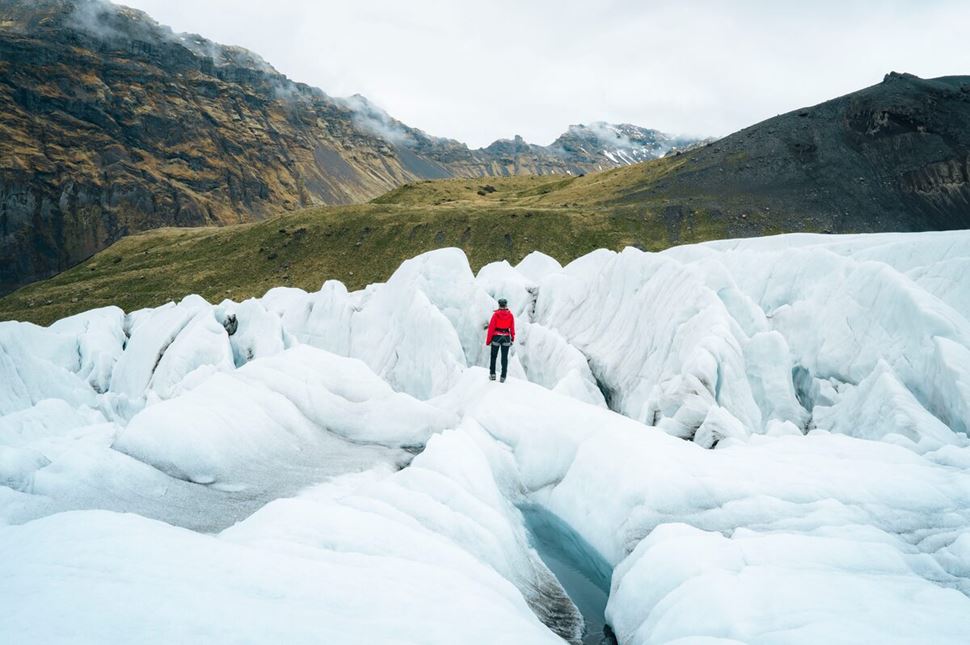
Mossy greens meet icy crevasses on the Skaftafell hike. Photo: Gunnar Gaukur.
To the West, Snæfellsjökull is the national park for you. Its legendary stratovolcano was first immortalized in Jules Verne’s Journey to the Center of the Earth.
Finally, in the northeast, there’s the frozen wonderland of Vatnajökull, with Iceland’s biggest glacier, glacial rivers, lagoons, and epic waterfalls.
Vestmannaeyjar archipelago, situated on the south coast of Iceland, is a great place to spend your Icelandic summer. The Westman Islands fascinate its visitors with its rich and compelling history and numerous attractions that can be visited during summer.
With the right tour, you’ll get to see the more important locations on the island. You’ll see attractions like the Elephant Rock, hike in Heimaklettur, bike around, and then get to see some puffins.
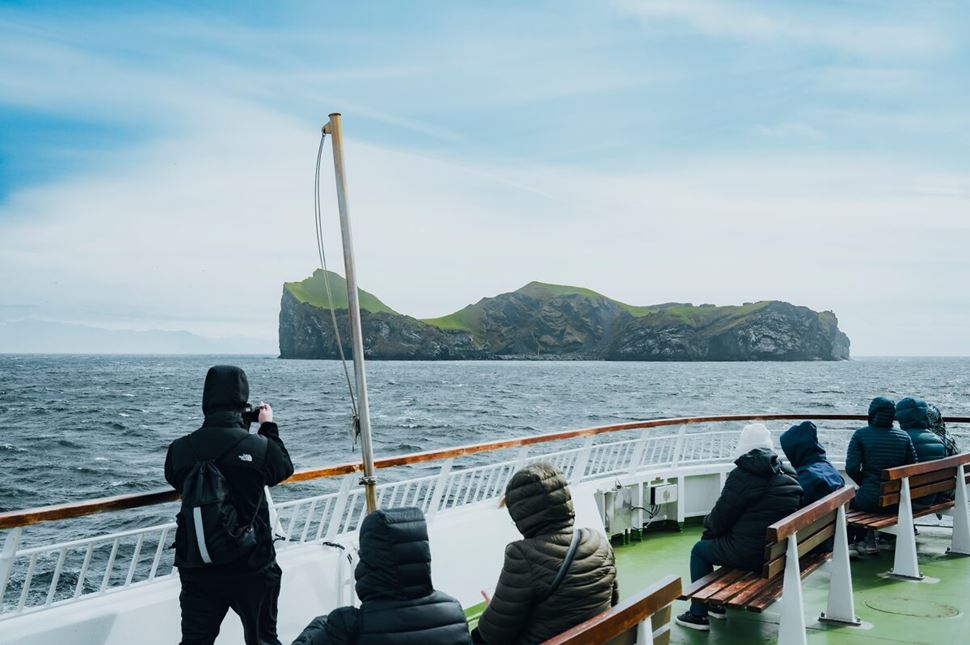
A journey to Vestmannaeyjar Islands. Taken during one of our tours.
The Westfjords peninsula is worth a visit in the summer months. It’s an ideal location for nature lovers and animal fans. While you can visit it in winter, the beauty pops between June and August.
Hornstrandir Nature Reserve is the main attraction of the peninsula. An uninhabited area where vegetation and animals thrive in almost complete silence. To experience it all, it’s best to take your time and explore it in six days or more.
Látrabjarg cliffs is a wonder on its own. 8.7 miles (14 kilometers) long and 1440 feet (440 meters) tall, the cliffs change completely in the summer. It’s a perfect spot to catch some puffins nesting and living their lives.
Isafjörður is the perfect place to relax and get in the sights. Known as the capital of Westfjords, the town is the center of tourism and culture in the area. A perfect spot for a comfortable vacation.
Dynjandi waterfall is the biggest in the area. It is not a single waterfall but a compilation of seven different ones. It’s a perfect location to hike to or drive in summer because it’s easier to access and appreciate.
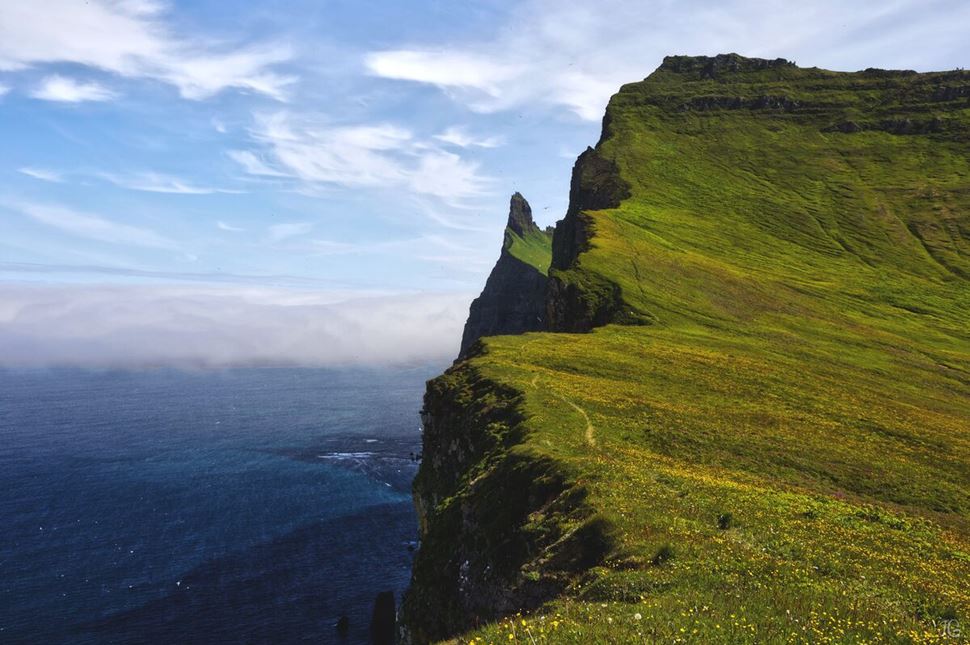
Sunlit horizons from Hornbjarg, a signature cliff in Hornstrandir Nature Reserve.
Who says you can’t enjoy the beauty of glaciers in the summer? The conditions are even better in some cases. Hikes are more frequent, and you won’t freeze as you climb.\
Snæfellsjökull glacier is the perfect place to visit. Located on the peninsula of the same name, it’s only accessible during the warmer summer season. Due to this, tourists flock to hike and enjoy the view.
These aren’t ordinary beaches. Instead of white sand, it’s black sand - a mixture of lava, basalt, and multiple minerals. While you can visit them all year round, summer is the perfect time for a chill beach day. It’s warmer, easier to predict the weather, and easier to access.
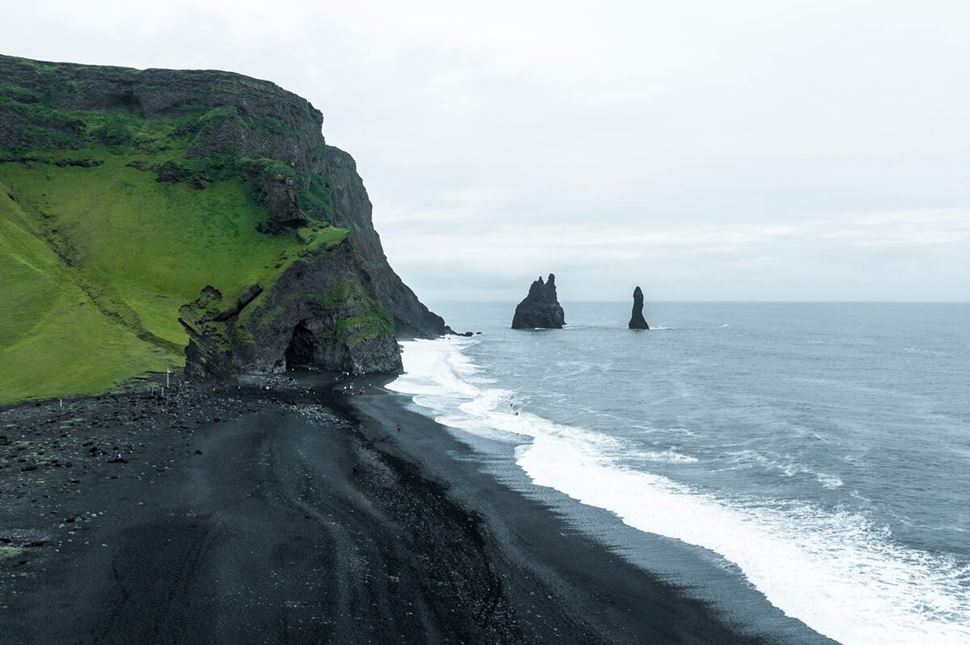
Striking summer contrasts of Reynisfjara beach, South Coast. Source: Gunnar Gaukur.
Reynisfjara Beach gets the most attention from tourists. Iconic and beautiful, it’s located on the south coast of Iceland. Basalt columns, lava formations, and stone arches accompany its black sand. The sights and weather make Reynisfjara a must-visit spot in summer.
Djúpalónssandur is another black sand beach perfect for Iceland’s summer weather. It’s located on the Snaefellsnes peninsula. A lot of people visit to see the interesting and unique rock formations. Other than that, it’s perfect for a short road trip.
Summer is the perfect season for a stroll around the capital city of Reykjavik. It’s a cultural hotspot for a reason. You can go on an unplanned trip and visit all the main sites in the city. From churches to concert halls, a full day (24 hours) is enough to explore the main destinations.
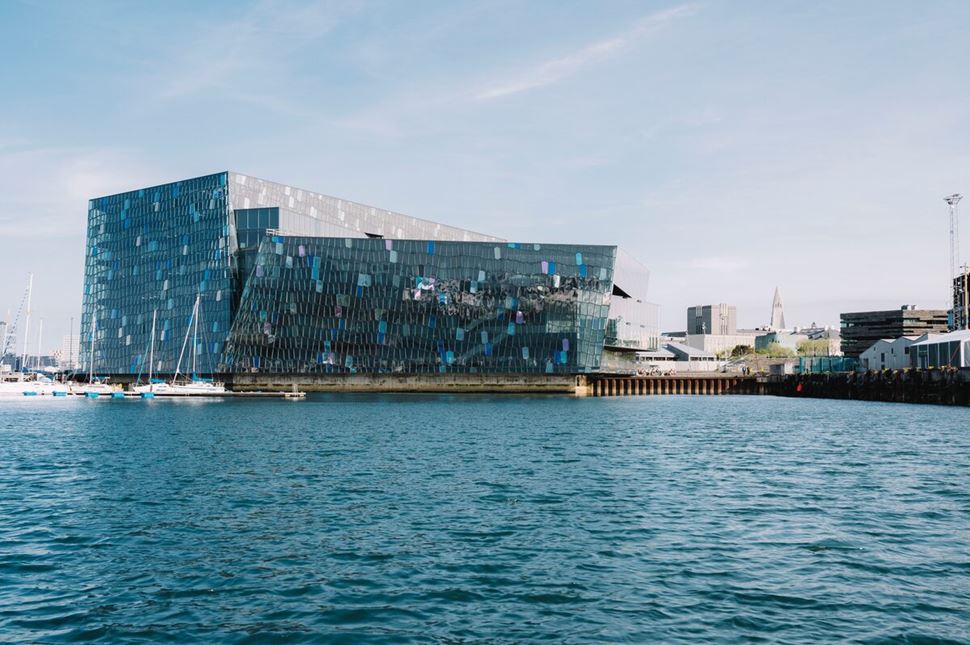
A view of Harpa Concert Hall from the sea in Reykjavik. Courtesy of Arctic Adventures.
Iceland in summer is something else. It stands out from other seasons in a few ways.
A summer vacation to Iceland also has some drawbacks.
We’re not sure where the saying comes from, but we say it in Iceland a lot: “There’s no bad weather, just wrong clothes.”
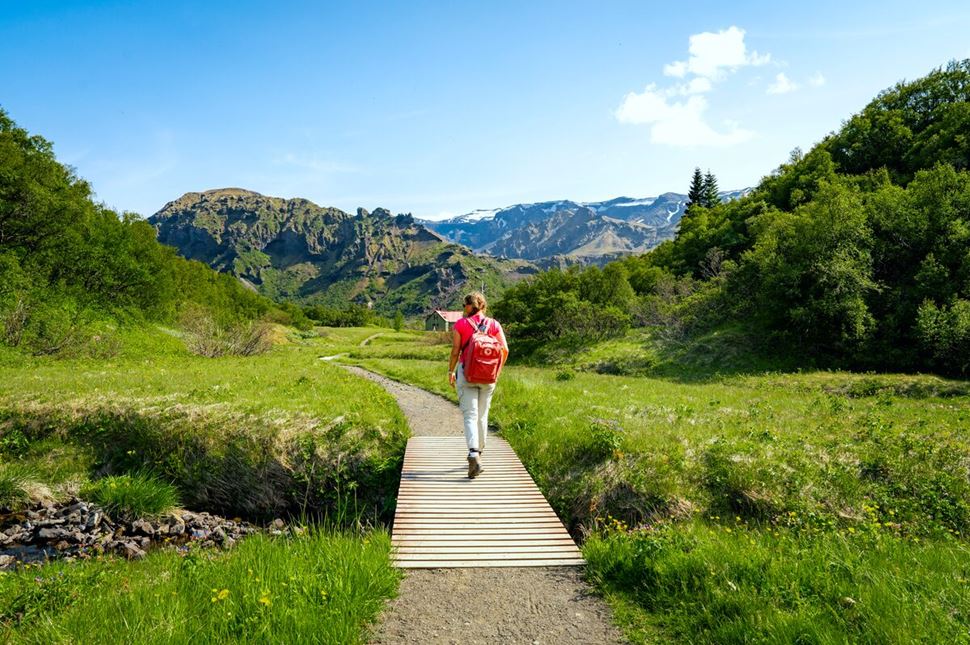
Pack layers and sturdy shoes for a summer hike in Þórsmörk. Image: Arctic Adventures.
What you pack will depend on the activities you intend to pursue, but we would recommend the following:
As you can see, even if you visit Iceland during summer, you should pack for all four seasons!
Things to do in Iceland in the summer include a wide range of outdoor adventures, as summer is a perfect month for a long road trip and hikes. It all depends on the plan you set out, the locations you want to visit, and the activities you will take part in.
June in Iceland marks the start of the summer. It’s getting warmer, and flowers start to bloom. It’s a perfect month to take a ring road tour. Also, the summer solstice happens around the 20th day, so you can enjoy festivals and multiple outdoor events happening during it.
Icelandic July feels special as nature hits its peak. It gets slightly warmer, and the days last around the same length. Thanks to a few more degrees, hiking trails open up, and people can explore them at their own pace. It’s the best month for a more active summer trip.
The best thing to do in Iceland in August is to relax. The temperature drops a few degrees as the fall approaches. It’s the perfect month for a short day tour to a hot spring like the Blue Lagoon. The nights get darker, and instead of 21 hours of sunlight, you get 16 to 17. With the dark sky comes a higher chance of seeing the Northern Lights.
Every summer, visitors from all over the world come to Iceland to bask in its natural beauty. Summer is the time when roads are most accessible, the skies clear, tours are most frequent, and bars and restaurants are open for the longest. Even if you decide to spend only a summer weekend in Iceland, our range of exciting day tours means you’ll have a fantastic time.
We look forward to seeing you on one of our summer tours!
Yes, Iceland has four seasons. Summer and winter are the most distinct, while spring and fall, known as shoulder seasons, often feel like transitional extensions of the two. Each time of the year in Iceland has its charm. Spring is beloved for awakening nature and mighty waterfalls, summer for the midnight sun, autumn for its quiet beauty, and winter for the Northern Lights.
Yes, Iceland has a summer season, lasting from June to August. This time brings the warmest temperatures, the least rainfall, and nearly 24 hours of daylight, known as the midnight sun. Popular summer activities in Iceland include wildlife watching, hiking, and multi-day sightseeing trips.
Icelanders celebrate the start of summer on the first Thursday after April 18th. This day, known as the Sumardagurinn fyrsti, is a public holiday and a traditional sign of the season’s arrival. The meteorological (calendar) summer, however, starts on June 1st.
Yes, it’s worth visiting Iceland in the summer, especially if you want to enjoy long daylight hours, green landscapes, and abundant wildlife. The weather in Iceland in summer is mild and relatively dry, with approximately 7–14°C (45–57°F). You can go hiking, horseback riding, wildlife watching, snorkeling, and try many other outdoor activities.
June in Iceland is the driest out of all summer months, with only 52.1 mm (2.05 in) of rain, compared to 64.7 mm (2.5 in) in July and 81.4 mm (3.2 in) in August. It’s also the brightest month, with over 21 hours of daylight. Temperatures are approximately 7–13°C (45–55°F), which is about 2 °C (35.6°F) lower than July and August.
Summer in Iceland lasts for three months, if you go by the calendar. However, for a long time, Iceland recognized only two seasons—summer, lasting half the year, and winter, the other half. Today, astronomical summer is typically considered to last about four months, from late May to August.
July in Iceland is quite busy. Due to the increased daylight and warmer weather, tourists flock to the country’s most popular sightseeing routes, such as the Golden Circle, to explore the sights. Many hiking enthusiasts visit Iceland to hit the early summer trails, and people come to see the adorable puffins that stay in the country from May to August.
Best Seller
